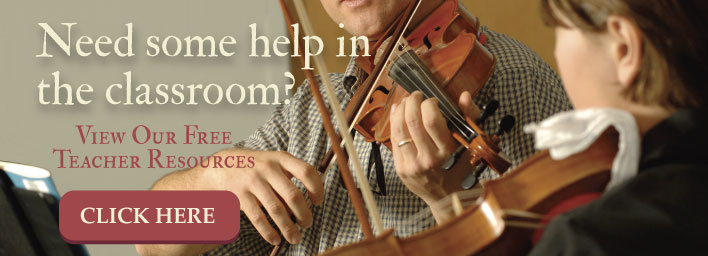Disruptive Students? 10 Ways Music Teachers Can Take Back The Classroom


Managing students is part of being an educator. You create assignments and charter the course of the year by outlining what your students need to learn, and the progress they need to display periodically. However, having to deal with disruptive and unruly students siphons the learning time from the others, and causes education impediments.
As a music teacher, you can take back the classroom by employing some practical techniques for discouraging and controlling student disruptions. Rather than initiating a scream fest, these ten ways utilize restorative methods that help develop positive relationships with your students, and therefore, subsequently reduce the amount of interruptions and disturbances you have to address over time.
Be a Calming Influence
Gaining control of your students during the first few minutes of class is typically a challenge. Even though the bell has rung, many students keep talking, goofing around, or leisurely setting up their instruments. However, the wasted time each day can add up quickly. If you want your students to be in their seats with their instruments ready as soon as the bell rings, you’ll need to reinforce that requirement.
First, make sure that your class understands what is expected. Instead of hollering, shooing, or using other (exhausting) herding techniques, use deliberate movements and calmly start writing the name of each student who hasn’t complied on the blackboard. Once the class has settled, explain that everyone whose name is listed has received their warning, the next infraction will result in punishment. Or, you may want to offer a second chance by placing a mark beside the name of a repeat offender.
Although this method may seem juvenile, you’re not putting the names on the board to shame the students, you’re actually providing a visual reminder for them that helps prevent other disruptions.
Alter Seating Arrangements
Although music teachers have limited options in this regard, altering the seating arrangements in order to separate cronies can help minimize the temptation to talk or act out. And while it’s naturally impossible to place a flute in the percussion section, you can make minor changes that will have an impact on the amount of disturbances you must address.
This can be a bit tricky. You obviously want your students to mesh and enjoy working together as a group, so consider carefully how you use this tool to take back your classroom.
Positive Reinforcement
Although a few posters aren’t going to solve problems, they do create a subtle influence that students will respond to over time. Adding inspirational pictures and posters with positive messages around your classroom can help.
Definitely take a few moments to assess the situation.
It’s easy to become exasperated and lose control, but by taking a few moments to assess the problem correctly, you can avoid stressful power struggles that demoralize your authority.
Use silent proximity.
Instead of calling someone to order, many times simply standing and expectantly eyeing the perpetrator is enough to halt the behavior.
Do discuss the situation.
Ask the disruptive student frankly and calmly why they have such little respect for you and their peers in class. Discuss what’s happening when the student acts out, how it makes you feel, and how it impacts the class. Explain that disruptive behavior actually tells everyone in class that the offender selfishly doesn’t care about anyone else.
Always follow through on your consequences.
Students are very quick to comprehend when you mean business. If you constantly threaten essays, detention, or other punishment and then fail to deliver on your promise, the students will lose respect for your authority.
Never raise your voice.
When engaging in a battle of wills, the calm combatant usually prevails. By keeping your voice at a normal level, you help maintain your composure and are more likely to reach a positive outcome. Calmly ask the student how his or her actions have impacted the class, and what they should do to make it right.
Don’t punish the entire class for the actions of a few.
Even if no one will rat and tell you who threw that eraser, knocked over the music stand that started a catastrophic domino effect, or making weird cow noises when you turn your back, don’t punish the entire class. Although things will immediately quiet down, the resentment you’ll breed won’t be directed at the culprits, it will just label you as an unfair teacher.
Don’t let unruly students ruffle your Zen.
Admittedly, this is difficult. Constant interruptions can frazzle anyone’s nerves. However, by staying in control, you’ll be better able to convey that attitude to your students.
Some days will naturally be more challenging than others, but by employing some of these proven, yet positive, control techniques, you can take back your classroom and create a learning environment that is characterized by mutual respect and civility.


